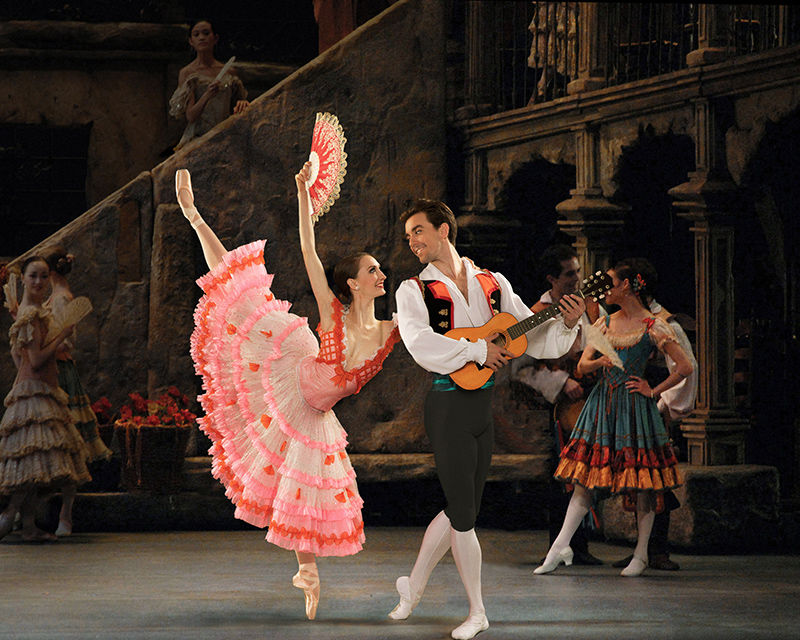For the lover of literature, there are moments one never forgets. Even now, I can’t quite believe “they” killed certain protagonists: the grandmother in Flannery O’Connor’s “A Good Man is Hard to Find,” Anne Frank, Christ.
There’s another moment, unique unto itself: the deathbed revelation of “Don Quixote.”
Everyone knows how Cervantes’ story begins: a restless middle-aged hidalgo, steeped in tales of chivalry, leaves the security of home, sets out with his bumbling (yet surprisingly witty) squire Sancho Panza and a broken-down nag named Rocinante, and in an extended fit of madness (or is he mad?) tries to set the injustices of the world straight.
Published in two volumes (1605 and 1615), “Don Quixote” is widely agreed to be a Western classic and regularly appears on lists of the best works of fiction ever written.
The deathbed revelation is the moment to which the whole novel has been building: all 1,000 (give-or-take) pages of antic tilting at windmills, fighting other imaginary enemies, sacrificing for Dulcinea, the lady love (in real life, a bawdy serving girl) he adores and who barely knows he exists.
It’s the moment when Don Quixote gives up the dream, the delusion, the fantasy, and soberly reverts to the “real world” of reason and good sense, sanity and wisdom.
I couldn’t believe, after slogging through those crazily rambling, strangely endearing adventures, that our hero was about to sell out.
My heart stopped. NO!
I wanted to throw myself on my knees by the Don’s bed and plead, “Don’t grow up in the wrong way! Don’t become too sober, too consistent, too predictable. Don’t lose your childlike love of fairy tale and chivalric epics and platonic love!”
Because isn’t the borderline-insane insistence on believing that we, too, are living out a knightly story; that we have undertaken a heroic, death-defying search for the Holy Grail, in large part what keeps us getting out of bed every morning?
In “Varieties of Religious Experience,” William James extrapolates on this mysterious human need to perceive, even to construct, obstacles where none may exist:
“Some austerity and wintry negativity, some roughness, danger, stringency, and effort, some ‘no! no!’ must be mixed in, to produce the sense of an existence with character and texture and power. ... [W]hatever the mixture of yeses and noes may be, the person is infallibly aware when he has struck it in the right proportion for him.
“This, he feels, is my proper vocation, this is the optimum, the law, the life for me to live. Here I find the degree of equilibrium, safety, calm and leisure, which I need, or here I find the challenge, passion, fight and hardship without which my soul’s energy expires. … [W]hatever is gained from day to day must be paid for by sacrifice and inhibition, or else it comes too cheap and has no zest.”
Cervantes himself lived much of his life in poverty. He was imprisoned for five years at one point by Barbary pirates.
He was never able to make a living from his plays and novels. He had no way of knowing that 400 years hence, people would still be reading — and writing their own books — about his greatest creation.
Ilan Stavans’ “Quixote: The Novel and the World” (Norton, 2015), for example, is a fine place to start if you want to know more of the history, influence and range of Cervantes’ masterwork.
The Catholic writer Miguel de Unamuno saw Don Quixote as a Christ figure. Flaubert modeled Madame Bovary after Cervantes’ hero. Picasso produced in iconic drawing of Quixote, Sancho and Rocinante.
And lucky for us, the Los Angeles Ballet will stage the ballet “Don Quixote” from Feb. 20 through March 26.
Artistic directors Colleen Neary and Thordal Christensen have chosen the Great Romantics as their theme this year (“Giselle” and “The Nutcracker” have come before; “Romeo and Juliet” will compete the season).
Ballet — the discipline, the wrenchingly short career, the risk of injury — is itself a form of tilting at windmills: a challenge, a passion, a fight, a hardship without which the soul’s energy of the dancers, we sense, would expire.
Christensen and Neary are husband and wife. In a 2014 interview, Christensen observed, “When done well, [ballet] can touch you. That’s what we want to do; we want to touch our audience. We want to send them home with something that touches their emotions.”
Added Neary, “We’ve been dancers, teachers, directors, and what you learn is that it never fades. When you work as a dancer and transition into a teacher, choreographer, stager, or director, the beauty still lives on through the dancers and everyone you work with. It’s a wonderful art form that way. It’s wonderful to come in and work with beautiful dancers every day. We learned a lot through our experience with ballet but it is our lives and it is our passion.”
Redemption. Sacrifice. Our sublime human urge to plow forward — against all odds, all good sense, all rational, worldly evidence — toward love.
As Dostoeveky wrote in a letter to his niece Sophia Ivanova in 1868:
“There is only one positively beautiful person in the world, Christ, and the phenomenon of this limitlessly, infinitely beautiful person is an infinite miracle in itself. (The whole Gospel according to John is about that: for him the whole miracle is only in the incarnation, in the manifestation of the beautiful.) But I am going too far. I’d only mention that of all the beautiful individuals in Christian literature, one stands out as the most perfect, Don Quixote. But he is beautiful only because he is ridiculous.”
Heather King is a blogger, speaker and the author of several books.

